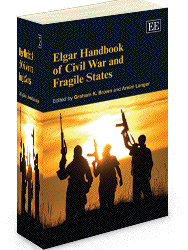Book Chapter
The Political Economy of Fragile States
Fragile states have very mixed characteristics. Some are experiencing violent conflict, some are ‘post-conflict’, some have avoided large-scale violence–so far. Many are resource poor, but some are resource rich. Many are landlocked, but certainly not all. What they do have in common is that aid donors find it tough to work with them. Weak governance and weak implementation capacity dominate donor discussion of fragile states. Running alongside the focus of aid donors on fragility is increasing attention to growth in recipient countries, in an attempt to reduce aid dependence. Another reason is the perceived link between low growth and conflict. But there is more to the economics of fragility than simply growth, and inequality matters as well. This chapter explores the political economy of fragility, using examples from countries that have, at one time or another, been on most donors’ lists of fragile states (definitions of fragile states do of course vary). The chapter is divided as follows. The next section reviews the evidence on the relationship between growth, fragility and civil war (Section 24.2). It emphasizes the need to look at the quality of growth not just the quantity. The chapter then turns to growth’s relationship to livelihoods and poverty in fragile states (Section 24.3). We assess two engines of growth. The first is internal, namely ways to build growth around the needs and capacities of poor people. The second is external, entailing better engagement with the global economy, changing the incentives of elites, and mobilizing the diaspora.
With detailed and comprehensive coverage, this Handbook will appeal to postgraduate and undergraduate students, policymakers, researchers and academics in conflict and peace studies, international relations, international politics and security studies.
Book chapter in Graham K. Brown and Armin Langer Elgard (eds), Handbook of Civil War and Fragile States.
 Join the network
Join the network